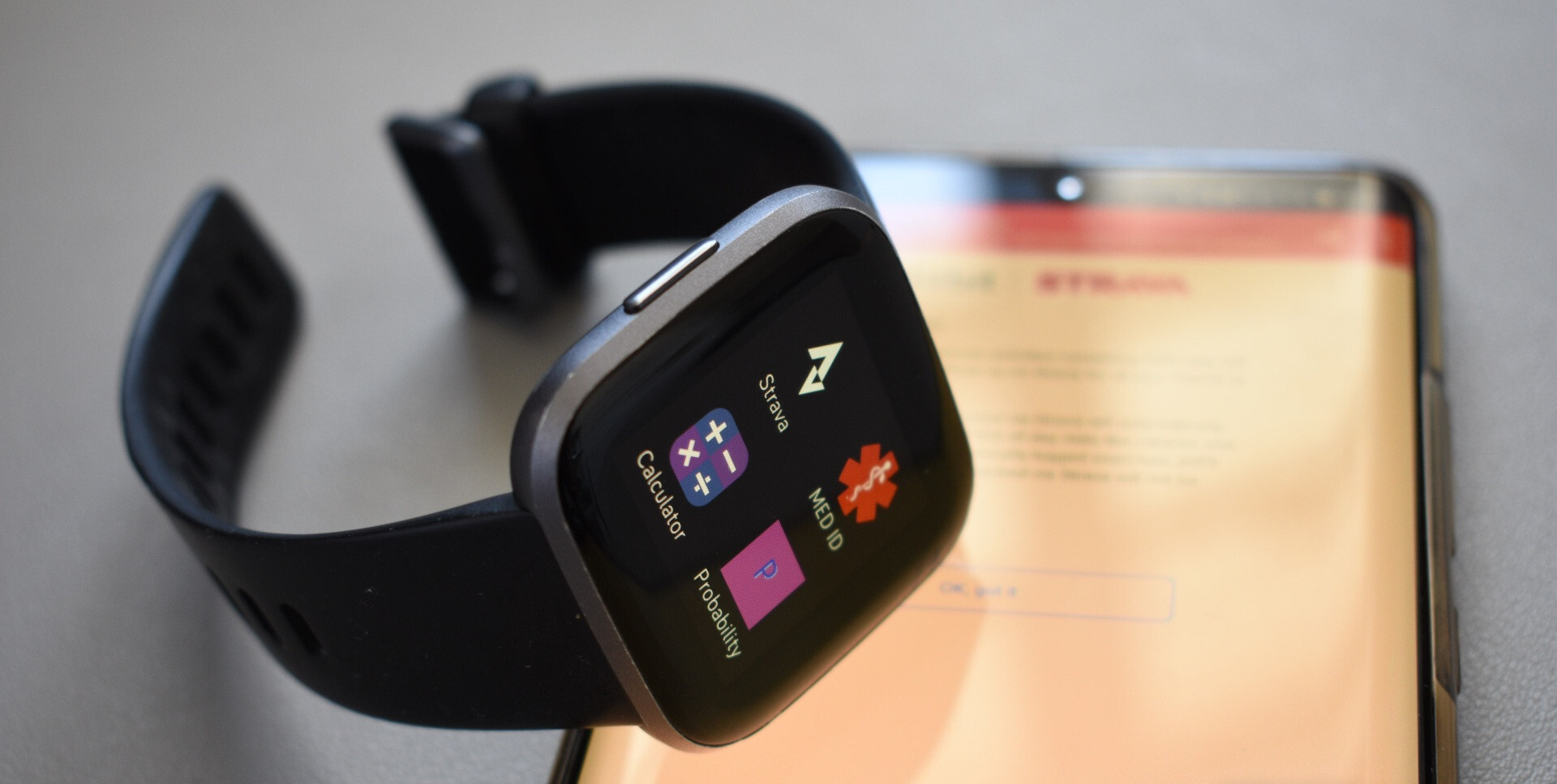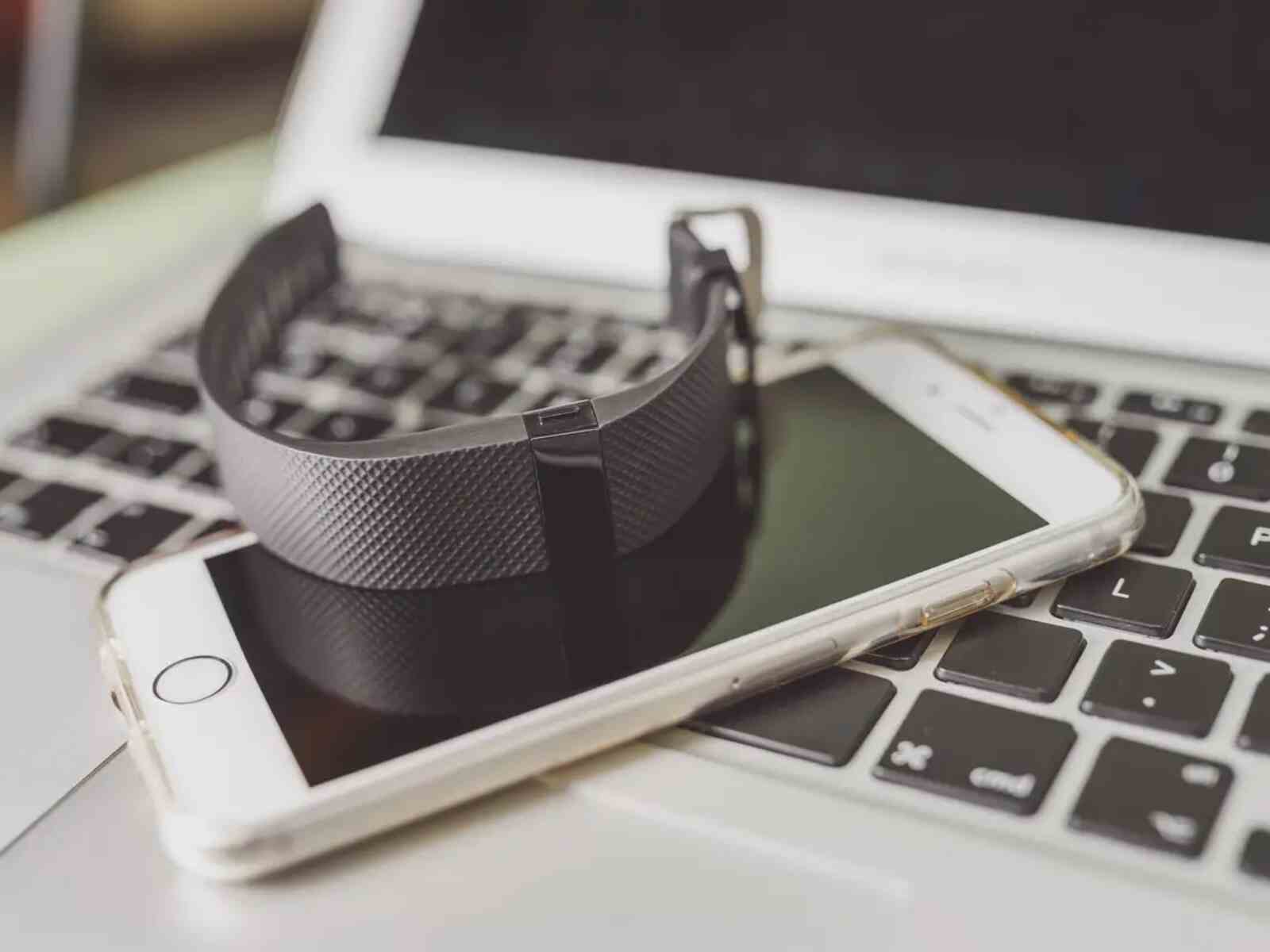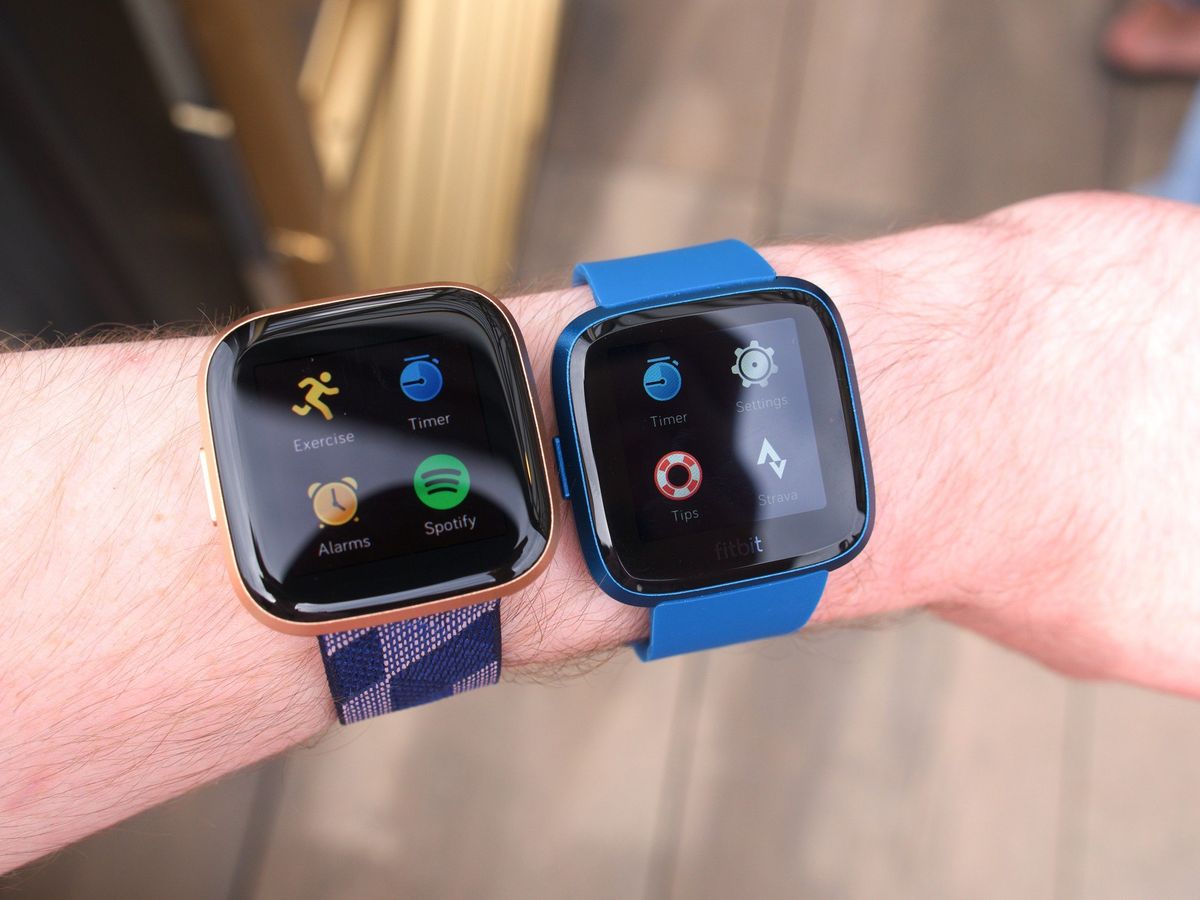Introduction
When it comes to fitness and wellness, Fitbit has emerged as a frontrunner in the wearable technology industry. With its array of sleek and innovative devices, Fitbit empowers individuals to track their physical activity, monitor their health metrics, and stay connected to their fitness goals. However, amidst the excitement of utilizing Fitbit's features, it's crucial to remember the significance of maintaining the security of your Fitbit account.
Logging out of your Fitbit account is a fundamental aspect of ensuring the safety and privacy of your personal data. Whether you're using the Fitbit mobile app or accessing your account through the website, understanding the logout process is essential for safeguarding your information. By taking proactive measures to sign out of your Fitbit account when necessary, you can mitigate the risk of unauthorized access and protect the integrity of your fitness journey.
In this comprehensive guide, we will delve into the significance of signing out of your Fitbit account and provide step-by-step instructions for logging out through both the mobile app and the website. Additionally, we will offer valuable tips for enhancing the security of your Fitbit account, empowering you to make informed decisions and take control of your digital well-being.
As we embark on this exploration of Fitbit account security, it's important to recognize the pivotal role that logging out plays in preserving the privacy and confidentiality of your personal data. Let's delve into the intricacies of signing out of your Fitbit account and equip ourselves with the knowledge needed to navigate the digital landscape with confidence and peace of mind.
Why is it important to sign out of your Fitbit account?
Logging out of your Fitbit account is a critical practice in maintaining the security and privacy of your personal information. By signing out after each session, you establish a barrier against unauthorized access to your data, thereby safeguarding sensitive details such as your activity history, heart rate metrics, and personal settings. This proactive measure serves as a digital lock, fortifying the boundaries of your Fitbit account and thwarting potential intrusions.
Furthermore, the act of signing out of your Fitbit account is especially vital when accessing your account from shared or public devices. Whether you're at a fitness facility, a community center, or any other public setting, it's imperative to log out to prevent others from gaining access to your Fitbit data. This simple yet crucial step can prevent unauthorized individuals from viewing or tampering with your personal health and fitness information.
Moreover, by signing out of your Fitbit account, you reduce the risk of unintentional account activity. In the event that you inadvertently leave your account open on a device, logging out acts as a fail-safe, preventing any unintended interactions or modifications to your Fitbit settings and data. This practice not only bolsters the security of your account but also ensures the integrity of your fitness tracking and health monitoring activities.
In the context of data privacy and protection, logging out of your Fitbit account serves as a proactive measure in the event of device loss or theft. By signing out, you mitigate the potential for unauthorized individuals to access your Fitbit data in the event that your device falls into the wrong hands. This preemptive action can be instrumental in safeguarding your personal information and preventing misuse of your Fitbit account.
In essence, signing out of your Fitbit account is a fundamental aspect of maintaining the confidentiality and security of your personal data. Whether it's to prevent unauthorized access, mitigate the risk of unintended account activity, or fortify your account's defenses in the event of device loss or theft, the act of logging out is a proactive step in preserving the privacy and integrity of your Fitbit experience.
How to sign out of your Fitbit account on the mobile app
Signing out of your Fitbit account via the mobile app is a straightforward process that ensures the security of your personal data. Whether you're using an iOS or Android device, the following steps will guide you through the logout procedure:
-
Accessing the Fitbit App: Begin by launching the Fitbit app on your mobile device. Upon opening the app, you will be greeted by the dashboard, which provides an overview of your activity, health metrics, and personalized insights.
-
Navigating to the Account Settings: To initiate the logout process, tap on the "Today" tab located at the bottom of the screen. From there, select the profile icon in the upper-left corner to access your account settings. This will lead you to the "Account" screen, where you can manage various aspects of your Fitbit account.
-
Initiating the Logout: Once you've accessed the "Account" screen, scroll down to the bottom to find the "Log Out" option. Tap on "Log Out," and a confirmation prompt will appear, asking if you're sure you want to log out. Confirm the action, and you will be successfully logged out of your Fitbit account.
-
Verifying the Logout: After logging out, you will be redirected to the Fitbit login screen, confirming that you have been successfully signed out of your account. This additional verification ensures that your account remains secure and inaccessible to unauthorized individuals.
By following these simple steps, you can confidently sign out of your Fitbit account on the mobile app, thereby enhancing the privacy and security of your personal data. Whether you're using your Fitbit device to track your fitness journey, monitor your health metrics, or engage with the Fitbit community, the ability to seamlessly log out of your account empowers you to maintain control over your digital well-being.
As you navigate the dynamic landscape of wearable technology and fitness tracking, it's essential to prioritize the security of your personal information. By familiarizing yourself with the logout process on the Fitbit mobile app, you can take proactive measures to protect the integrity of your Fitbit account and enjoy a peace of mind as you embrace the benefits of this innovative platform.
How to sign out of your Fitbit account on the website
Signing out of your Fitbit account through the website is a pivotal step in securing your personal data and maintaining the privacy of your fitness and health information. Whether you're accessing your Fitbit account from a desktop, laptop, or any other web-enabled device, the logout process is designed to ensure that your account remains inaccessible to unauthorized individuals. Here's a detailed guide on how to sign out of your Fitbit account on the website:
-
Accessing the Fitbit Website: Begin by navigating to the official Fitbit website using your preferred web browser. Once you've arrived at the Fitbit homepage, proceed to log into your account by entering your credentials in the designated sign-in fields.
-
Navigating to Account Settings: After successfully logging into your Fitbit account, locate and click on the profile icon or your username, typically located in the upper-right corner of the website. This action will reveal a dropdown menu or direct you to a new page where you can manage various account settings and preferences.
-
Initiating the Logout: Within the account settings or user profile section, look for the "Log Out" or "Sign Out" option. Click on this feature to initiate the logout process. A confirmation prompt may appear, asking if you're sure you want to log out. Confirm the action to proceed with signing out of your Fitbit account.
-
Verification of Logout: Upon successfully logging out, you may be redirected to the Fitbit homepage or the login screen, signaling that you have been effectively signed out of your account. This additional verification step ensures that your account remains secure and inaccessible to unauthorized users.
By following these steps, you can confidently sign out of your Fitbit account on the website, bolstering the security and privacy of your personal data. Whether you're engaging with the Fitbit community, accessing personalized insights, or managing your fitness and health metrics, the ability to seamlessly log out of your account empowers you to maintain control over your digital well-being.
As you navigate the diverse features and functionalities offered by the Fitbit website, prioritizing the security of your personal information through the logout process is paramount. By familiarizing yourself with the steps to sign out of your Fitbit account on the website, you can take proactive measures to safeguard the integrity of your account and engage with the platform with confidence and peace of mind.
Additional tips for securing your Fitbit account
In addition to logging out of your Fitbit account after each session, implementing additional security measures can further fortify the integrity of your personal data and enhance the overall protection of your Fitbit account. By incorporating the following tips into your digital practices, you can proactively safeguard your information and enjoy a heightened sense of security within the Fitbit ecosystem.
-
Enable Two-Factor Authentication: Consider enabling two-factor authentication (2FA) for your Fitbit account. This additional layer of security requires a secondary form of verification, such as a unique code sent to your mobile device, in addition to your password. By activating 2FA, you significantly reduce the risk of unauthorized access, as potential intruders would need both your password and the secondary verification code to breach your account.
-
Regularly Review App Permissions: Periodically review the permissions granted to third-party apps or integrations connected to your Fitbit account. Ensure that only trusted and essential applications have access to your Fitbit data. Revoking permissions for unused or unnecessary apps can minimize the exposure of your personal information and mitigate potential security vulnerabilities.
-
Stay Informed About Security Updates: Stay informed about security updates and patches released by Fitbit. Regularly update your Fitbit device firmware, mobile app, and web account to ensure that you have the latest security enhancements and bug fixes. By staying current with software updates, you can benefit from improved security features and heightened protection against potential vulnerabilities.
-
Use a Strong, Unique Password: Utilize a strong and unique password for your Fitbit account. Avoid using easily guessable passwords or reusing passwords from other accounts. Incorporate a combination of uppercase and lowercase letters, numbers, and special characters to create a robust password that is resistant to brute-force attacks and unauthorized access attempts.
-
Monitor Account Activity: Routinely monitor your Fitbit account activity and review your recent login history. By staying vigilant and promptly identifying any irregular account access, you can take swift action to secure your account and investigate potential security breaches. If you notice any suspicious activity, consider changing your password and reviewing your account settings.
By integrating these additional tips into your Fitbit account management practices, you can elevate the security posture of your account and cultivate a heightened awareness of digital security best practices. These proactive measures empower you to navigate the Fitbit platform with confidence and assurance, knowing that your personal data is safeguarded against potential threats and unauthorized access.
Conclusion
As we conclude this comprehensive exploration of signing out of your Fitbit account, it's evident that prioritizing the security and privacy of your personal data is paramount in the digital age. By understanding the significance of logging out after each session and familiarizing yourself with the logout processes on the Fitbit mobile app and website, you've taken proactive steps to fortify the integrity of your account and protect the confidentiality of your health and fitness information.
The act of logging out serves as a digital barrier, safeguarding your Fitbit account from unauthorized access and mitigating the risk of unintended account activity. Whether you're engaging with the Fitbit community, tracking your fitness journey, or accessing personalized insights, the ability to seamlessly sign out empowers you to maintain control over your digital well-being, fostering a sense of confidence and assurance as you interact with the platform.
Furthermore, by incorporating additional security measures such as enabling two-factor authentication, regularly reviewing app permissions, staying informed about security updates, using strong and unique passwords, and monitoring account activity, you can elevate the security posture of your Fitbit account and cultivate a heightened awareness of digital security best practices.
As you continue to embrace the benefits of wearable technology and fitness tracking, the knowledge and proactive measures outlined in this guide position you to navigate the Fitbit ecosystem with resilience and assurance. By integrating these practices into your digital routine, you can enjoy a heightened sense of security, knowing that your personal data is shielded from potential threats and unauthorized access.
In essence, the act of signing out of your Fitbit account symbolizes a commitment to preserving the privacy and integrity of your personal information. By embracing this proactive approach to account security, you not only fortify the defenses of your Fitbit account but also cultivate a sense of empowerment and control over your digital interactions. As you embark on your fitness and wellness journey with Fitbit, may this knowledge serve as a guiding light, empowering you to navigate the digital landscape with confidence and peace of mind.
























